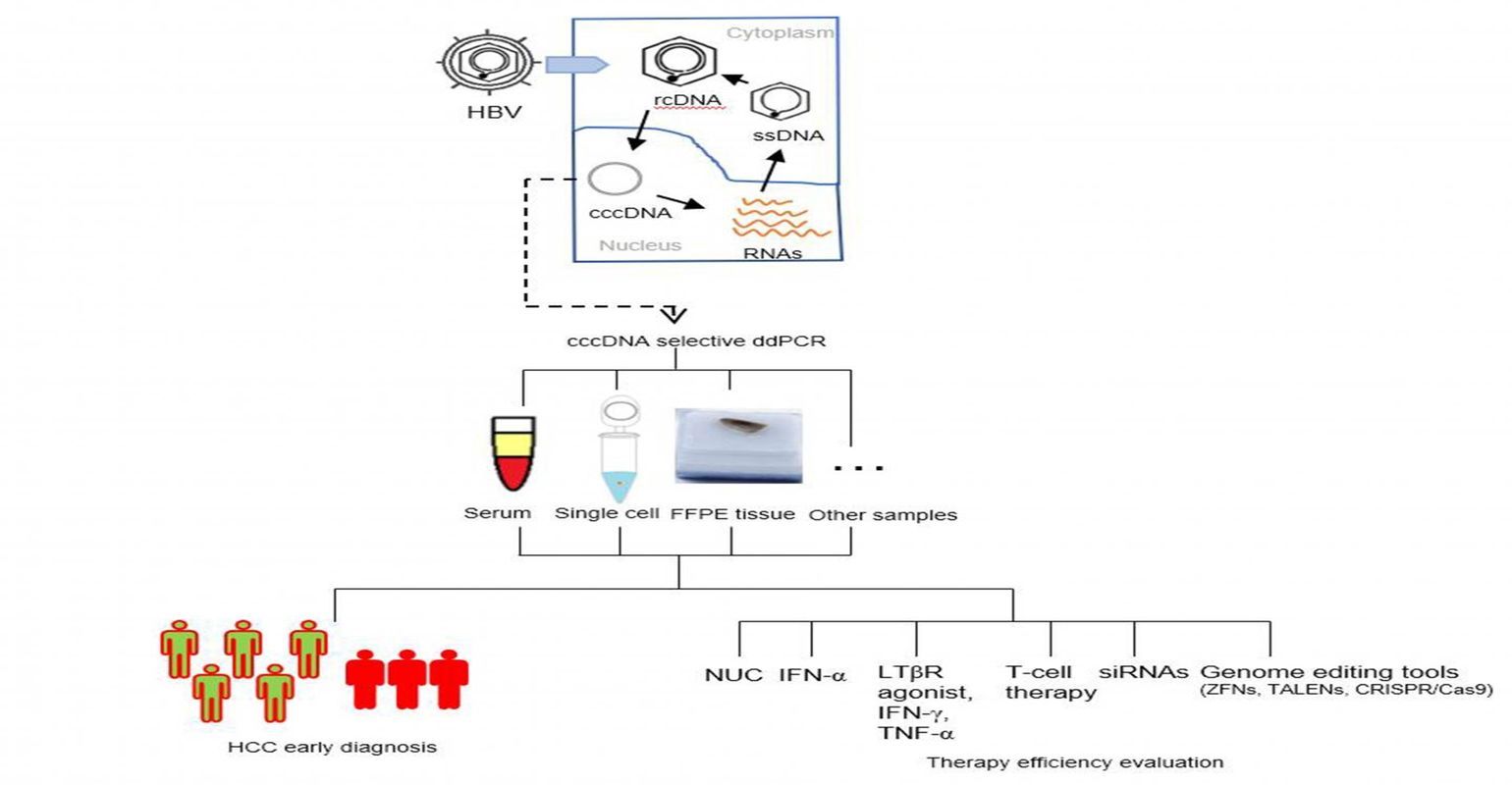Sensitive New Assay Detects Hepatitis B Infection in Single Liver Cells and Serum

Chronic hepatitis B virus (HBV) can progress to cirrhosis and hepatocellular carcinoma (HCC). A study published in the Journal of Molecular Diagnostics describes a new HBV assay that offers advantages over currently used methods because it has the capability to detect closed circular DNA (cccDNA) in serum, single cells, and preserved tissue samples. This assay can be used to diagnose HCC at an earlier stage to manage treatment more effectively.
"The development of HCC is strongly associated with HBV. Recently, several new antiviral strategies targeting cccDNA have been established to improve HBV clearance. It is of great clinical significance to provide an accurate and sensitive approach for cccDNA detection. With this method, more and more patients with chronic HBV will have precision treatment available to prevent or delay HCC occurrence, and HCC in patients could be diagnosed at an earlier stage," explained lead investigator Song-Mei Liu, MD, PhD, of the Center for Gene Diagnosis, Zhongnan Hospital of Wuhan University, Wuhan, China.
The new assay utilizes droplet digital PCR (ddPCR), which is highly sensitive and accurate for detecting trace molecules such as viruses. By combining ddPCR with PCR, the researchers were able to detect cccDNA in serum, single cells, and formalin-fixed, paraffin-embedded tumor issues. Southern blotting, currently considered the gold standard for this purpose, and other assays have important limitations like less sensitivity than ddPCR in detecting low copy numbers of cccDNA. Other methods require obtaining liver tissue through liver biopsy. "Compared to liver biopsy, serum can be obtained noninvasively, is widely used for clinical diagnostic purposes, and has a homogenous cccDNA distribution. The assay also improves the limit of detection of cccDNA," noted Dr. Liu.
ddPCR was useful to identify which patients might be harboring hepatocellular carcinoma. Researchers found that almost 90 percent of 68 HCC patients were cccDNA-positive compared to 53 percent of 79 non-HCC patients. Serum cccDNA copy number was found to be higher in HCC patients compared to non-HCC patients. Combined analysis of serum cccDNA and HBV-DNA distinguished HCC patients from non-HCC patients. "This implicates cccDNA as a risk factor for HCC," said Dr. Liu.
The investigators were also able to confirm that serum cccDNA was positively correlated with levels of cccDNA measured in liver samples. "Serum cccDNA is indeed a much better and useful diagnostic marker than intrahepatic cccDNA," said Dr. Liu. Recently, several new antiviral strategies targeting cccDNA have been found to improve HBV clearance. Therefore, providing an accurate and sensitive approach for cccDNA detection is of great clinical significance for earlier diagnosis and HCC prediction, targeted treatment, and evaluating treatment efficacy.
In an accompanying commentary Fan Shen, MD, PhD, of the Department of Laboratory Medicine and Pathology, University of Alberta, Edmonton, AB, Canada, observed, "Quantification of serum cccDNA and HBV-DNA is an effective way to discriminate HCC patients from non-HCC patients with a sensitivity of 74.5 percent and a specificity of 93.7 percent. This is an important finding and could lead to earlier diagnosis of HCC and more accurate prediction of chronic HBV progress in a noninvasive manner."
According to the World Health Organization, 257 million individuals worldwide are infected with HBV, and in 2015 HBV resulted in 887,000 deaths, primarily due to liver complications. Chronic HBV infection can be treated with medications such as tenofovir or entecavir. In 2015, only nine percent of individuals living with HBV infection were aware they were infected.
Source: Elsevier
Robust infectious disease surveillance, including rapid subtyping of influenza A, is essential for early detection, containment, and public health reporting of novel viral threats.